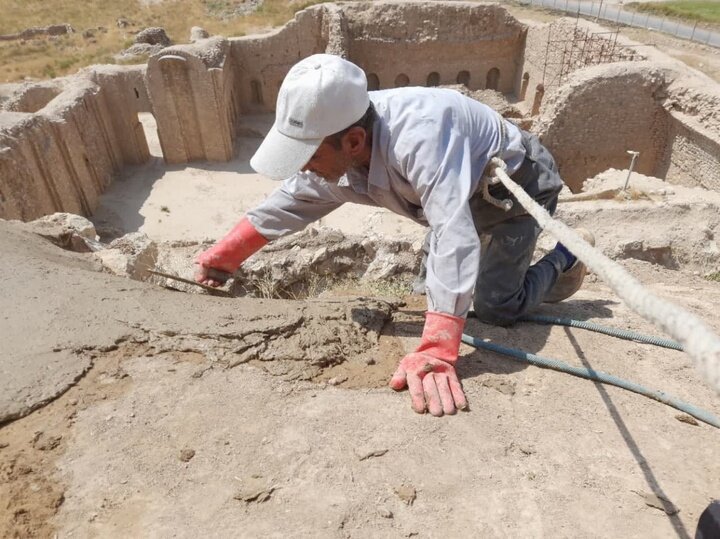Ardeshir Babakan’s palace restoration complete

TEHRAN – Iran has completed a project to restore the ruined palace of Ardeshir Babakan, a Sassanid King (r. 211/2–224), who was the founder of the Persian Sasanian Empire.
The palace has undergone consecutive rounds of restoration over the past couple of years, a local official said on Sunday.
Located in Firuzabad, southern Iran, the palace along with several other counterparts constitute the UNESCO-designated Sassanid Archaeological Landscape of Fars Region.
Firuzabad, formerly known as Gur, was once a politico-cultural capital of the Sassanid Empire (224–651). It was established by Ardeshir as one of the strategic cities of the mighty empire.
The palace is one of the most notable examples of Sassanid-era architecture, embellished with lovely stuccos and sturdy vaults. The distinction between the palace’s official and residential areas is another intriguing aspect. As a result, there is a large hall adjacent to the administrative palace that was built to host meetings between the king and officials from the government.
Its main courtyard and a lake create a beautiful view of the palace of Ardeshir at the end of the palace and its exterior. However, the lake is also visible from the palace’s exterior.
There are many corridors and iwans (porticos) throughout the structure, which are 116 meters long and 55 meters wide. There are halls connected by iwans in both the eastern and western portions of this palace. The palace’s triple domes are among its most notable features.
The Sassanid epoch is of very high importance in the history of Iran. Under the Sassanids, Persian art and architecture experienced a general renaissance. Architecture often took grandiose proportions, such as some palaces located in Ctesiphon, Firuzabad, and Sarvestan, which are amongst the highlights of the ensemble.
Crafts such as metalwork and gem engraving grew highly sophisticated, yet scholarship was encouraged by the state. In those years, works from both the East and West were translated into Pahlavi, the language of the Sassanians.
The Sassanid archaeological landscape also represents a highly efficient system of land use and strategic utilization of natural topography in the creation of the earliest cultural centers of the Sassanid civilization.
In 2018, UNESCO added an ensemble of Sassanian historical cities in southern Iran — titled “Sassanid Archaeological Landscape of Fars Region”-- to its World Heritage list. The ensemble comprises eight archaeological sites situated in three geographical parts of Firuzabad, Bishapur, and Sarvestan. It reflects the optimized utilization of natural topography and bears witness to the influence of Achaemenid and Parthian cultural traditions and Roman art that later made a significant impact on the architecture and artistic styles of the Islamic era.
AFM
Leave a Comment